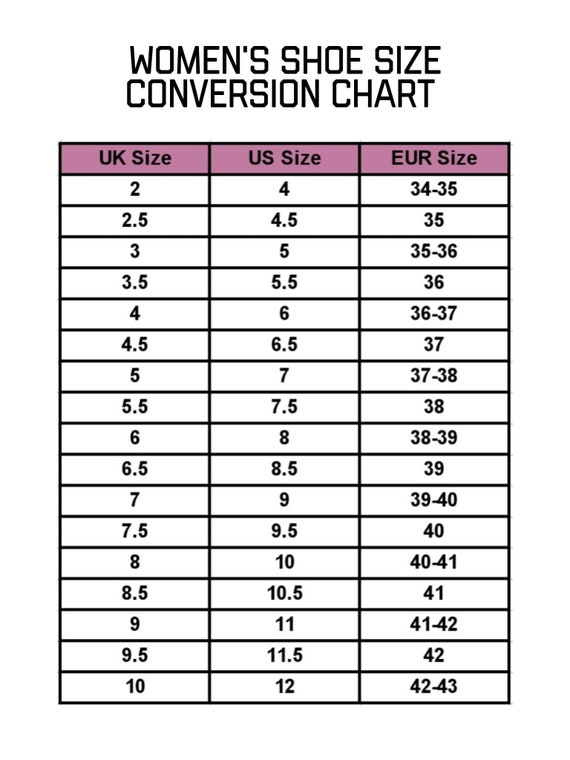Understanding Kids’ Shoe Size Conversion: A Parent’s Guide
Hey there, super parents! Are you geared up for that next shoe shopping spree for your little munchkins but dread the confusing world of shoe size conversion? Fret not, cause we’re here to sprinkle some magic dust on that size chart and make shoe shopping a walk in the park! ?
Let’s face it, no two feet are the same and when it comes to your kiddos, you want their tiny toes to have the best fit possible. But with sizes varying from country to country, we wouldn’t blame you if you felt like you were trying to solve a puzzle where the pieces keep changing shapes!
Why Shoe Size Conversion Charts are a Must-Have for Parents
Before we dive into the nifty charts, let’s chat briefly about why having a reliable shoe size conversion chart is as essential as that extra snack in your bag (because let’s admit it, snacks are lifesavers). Kids grow faster than a beanstalk, and keeping up with their ever-changing shoe sizes can be just as dizzying.
Shoe size conversion charts are your trusty sidekick, ensuring that whether you’re ordering those adorable sneakers from a foreign brand or eyeing a pair of ballet flats on an overseas vacation, your kiddo’s feet will be nestled in comfort and style, no guesswork required!
A Step-by-Step Guide to Measuring Your Child’s Feet Accurately
Before you even glance at a size chart, you’ll need your child’s exact foot measurements. Here’s how to do that with ease:
- Find the Right Tools: Grab a piece of paper, a pen, and a ruler or measuring tape. Make sure your little one is standing – this ensures a more accurate measurement as feet spread when bearing weight.
- Trace Away: Have your child stand on the paper with their heel against a wall. Trace around their foot – a fun activity they can help with! ?
- Measure: Use your ruler to measure from the end of the paper to the tip of the longest toe – this gives you the foot length. Then, measure the widest part of the foot for the width.
- Note It Down: Jot down these measurements in both inches and centimeters – it’ll come in handy when swapping between different country’s sizes.
Pro Tip: Measure both feet! It’s quite common for one foot to be slightly larger than the other, so always go by the measurement of the larger foot to ensure a comfy fit.
The Shoe Size Conversion Chart – Demystified!
Now that you’ve got the measurements, let’s unravel the mystery of the shoe size conversion chart. These handy tables correlate foot length to shoe sizes across various international sizing systems such as US, UK, EU, and more. But remember, charts can differ slightly by brand, so consider them a starting point and always check the manufacturer’s specifics.
We’ve crafted a straightforward shoe size conversion chart to guide you through finding that perfect fit:
Little Kids’ Shoe Sizes Conversion Chart (Approximate Age: 4-8 years)
| US | UK | EU | Foot length (inches) | Foot length (cm) |
|---|---|---|---|---|
| 10C | 9 | 27 | 6.33″ | 16.1cm |
With the conversion chart in hand, and your child’s foot measurements ready, you’re all set to navigate the shoe aisles like a pro. Remember, a snug fit is crucial for healthy foot development, so use these charts as a guide, but always prioritize comfort and fit.
Isn’t it wonderful knowing you’ll now be able to pick those perfect pairs without breaking a sweat? The days of return receipts and guessing games are over, illuminating the path to happy feet and even happier shopping trips!
We hope this snippet of our ultimate guide has brightened your day and demystified kids’ shoe size conversion. Stay tuned as we unravel more tips and tricks for mastering the perfect shoe fit for your children!

5 Essential Tips for Parents Preparing for Shoe Size Conversion
Navigating the shoe size conversion landscape can be as challenging as convincing your youngster to eat their veggies—but it’s crucial for keeping those little feet happy! Here are five golden nuggets of wisdom to ease the process:
- Understanding Growth Spurts: Children’s feet grow in spurts, and they can require new shoes as often as every three months. Keep an eye out for tell-tale signs that it’s time for a size up, like toe imprints on shoes or your child complaining about discomfort.
- Room to Wiggle: When selecting shoes, aim for about a thumb’s width of space between the front of the shoe and your child’s longest toe. This ensures there’s room for growth and movement without the shoe being overly large.
- Varied Sizes Across Brands: Just like adults, shoe sizes for kids can vary between different brands. Don’t rely on a size that worked well with one brand as the universal size for your child—always check the specific brand’s size chart.
- Considering Width Matters: Kids’ shoes come in varying widths, and a proper fit isn’t just about length. Make sure to consider the width of your child’s feet, especially if they are wider or more narrow than average.
- Online Resources & Apps: Leverage technology by using apps and online tools for measuring feet at home. These can sometimes offer more precise measurements and may provide brand-specific size recommendations, making online shopping much easier.
Deciphering the Shoe Size Chart
Allow us to break down the conversion chart for you, with additional rows to cover sizes that cater to children of various ages. As you’ll see, these charts provide a comparative look at international sizing to help you swap between systems seamlessly:
Toddler Shoe Sizes Conversion Chart (Approximate Age: 1-3 years)
| US | UK | EU | Foot length (inches) | Foot length (cm) |
|---|
Big Kids’ Shoe Sizes Conversion Chart (Approximate Age: 8-12 years)
| US | UK | EU | Foot length (inches) | Foot length (cm) |
|---|
Each age group comes with its unique set of challenges, but with the insightful charts provided, you’ll feel confident in making the right choices. Whether dealing with toddlers who outgrow shoes almost overnight or pre-teens starting to care about fashion trends, the right shoe size is non-negotiable for their active and growing feet.
Understanding how shoe size conversion works is more than just a convenience—it’s an investment in your child’s comfort and foot health. Good shoes can make all the difference to your child’s day—it can mean the difference between a happy playtime and a day spent on the sidelines. So, keep these charts and tips in your parenting toolkit and ensure those growing feet are well cared for on every step of their exciting journey!
For more great articles please see here. For more information see here
Disclaimer
The articles available via our website provide general information only and we strongly urge readers to exercise caution and conduct their own thorough research and fact-checking. The information presented should not be taken as absolute truth, and, to the maximum extent permitted by law, we will not be held liable for any inaccuracies or errors in the content. It is essential for individuals to independently verify and validate the information before making any decisions or taking any actions based on the articles.




